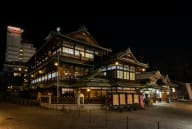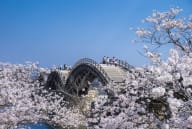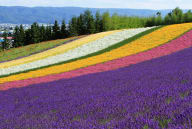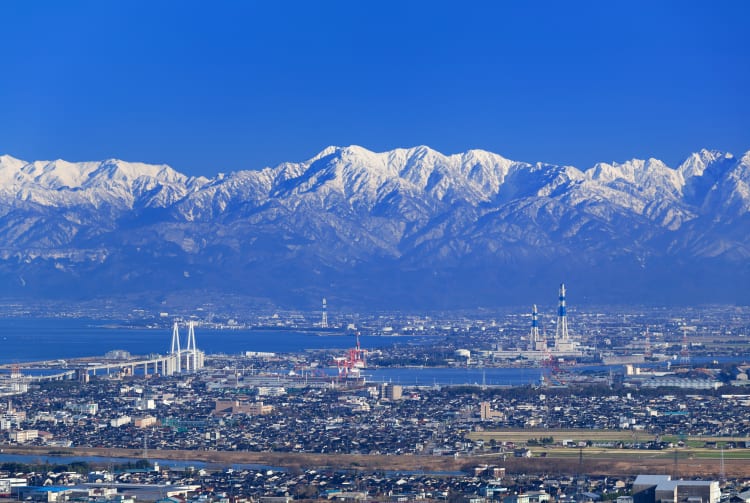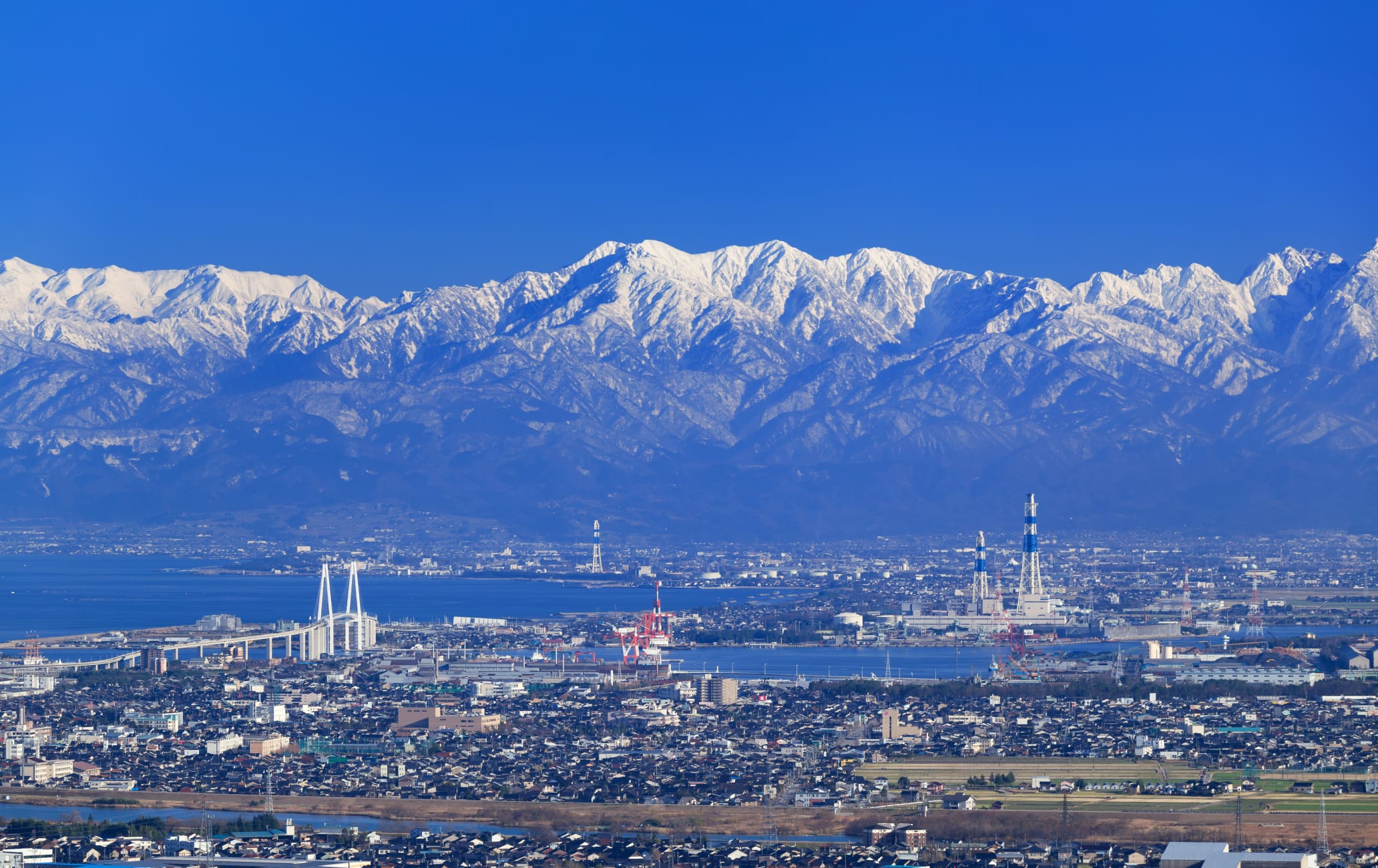Le Grand Nord des Alpes du Japon
Tateyama et Tsurugi, les deux plus hauts sommets de la chaîne de montagnes de Tateyama, forment un magnifique paysage à l'est de la préfecture de Toyama .
Seuls les voyageurs les plus téméraires oseront s'attaquer au sommet en dents de scie de la chaîne de montagnes de Tateyama.

À ne pas manquer
- Le célèbre sanctuaire de montagne d'Oyama se dresse au sommet de Tateyama
- Un trek de deux jours jusqu'au sommet du légendaire mont Tsurugi
- Un trekking fabuleux d'une semaine au départ de Tateyama jusqu'à Kamikochi. C'est sans aucun doute le chemin de montagne le plus fréquenté du Japon
Comment s'y rendre
La plupart des gens accèdent aux plus hauts sommets de Tateyama depuis Murodo, via la route alpine de Tateyama Kurobe. Vous pouvez entamer la montée d'un côté ou de l'autre de la route, depuis la gare de Tateyama du côté de Toyama, ou depuis la gare d'Ogizawa, à Omachi, dans la préfecture voisine de Nagano.
Au départ de Toyama, partez de Toyama Densetsu jusqu'à la gare de Tateyama. Depuis la gare d'Omachi, rendez-vous à la gare d'Ogizawa et prenez la route de Murodo via la route alpine.
Géographie
La partie la plus au nord de la chaîne de montagnes Hida au Japon (ou Nord des Alpes du Japon) se divise en deux au niveau du barrage de Kurobe qui se situe dans la vallée.
À l'est, la chaîne de montagnes d'Ushiro-Tateyama borde la préfecture de Nagano et abrite les célèbres stations de ski de Hakuba. À l'ouest, la chaîne de montagnes de Tateyama s'étend de tout son long sur Toyama et représente l'emblème de cette préfecture.
Reconnaissable de loin grâce à sa forme distincte, le pic Tsurugi siège royalement au centre, tel un diamant brut sur une couronne. Juste au sud de Tsurugi, le doux relief de Tateyama donne l'impression que ce pic est le plus petit des deux. Les deux plus hauts pics des montagnes Hida, Tateyama et Tsurugi, se classent également parmi les plus beaux paysages du parc national de Chubu Sangaku.
La montagne sacrée de Toyama
Bien qu'on en parle souvent comme s'il s'agissait d'une seule montagne, Tateyama comporte en réalité trois pics, le plus connu (Oyama) n'étant seulement que le deuxième plus haut pic des trois. Tout comme les monts Fuji et Hakusan, Tateyama compte parmi les trois montagnes sacrées du pays.
La légende raconte qu'au VIIIe siècle, un chasseur poursuivit un ours blessé jusqu'à Murodo et le vit se transformer en un Bouddha d'or. Par la suite, le chasseur devint prêtre et dévoua sa vie à la conservation de ce nouveau lieu sacré. De nos jours, ce sanctuaire perché au sommet de la montagne d'Oyama est l'une des principales attractions du lieu.
En été, lorsque le thermomètre grimpe, de nombreuses personnes se laissent séduire par la localisation stratégique du lieu et l'ascension relativement aisée du Tateyama. Les foules représenteront sans doute un plus gros obstacle pour arriver au sommet que l'ascension en elle-même. Il est donc conseillé de prolonger votre séjour et de passer la nuit dans un chalet ou à l'hôtel pour soulager vos muscles fatigués. Il est également possible de faire l'aller-retour en une journée, mais cela risque sans doute de faire un peu juste.
Un très haut sommet
Le mont Tsurugi fut le dernier des hauts sommets du Japon à être atteint. Après maintes tentatives, les membres du département du cadastre du Japon parvinrent finalement au sommet du Tsurugi en 1906. L'effort que cette ascension leur a coûté ne fit qu'accroître l'aspect dangereux de la montagne.
Alors qu'ils pensaient être les premiers à atteindre le sommet, ils découvrirent une fois en haut un sabre et un bâton datant d'avant le XIIe siècle. Comment ces deux objets sont-ils arrivés jusque-là ? C'est encore un mystère.
L'ascension du mont Tateyama est nettement plus facile que celle du mont Tsurugi. L'ascension du Tsurugi échappe à la qualification d'escalade dite « technique » simplement parce qu'un ensemble de chaînes et d'échelles bien entretenues facilite l'ascension et réduit le besoin de cordes et autres matériels d'escalade. Même avec une corde solide à laquelle s'accrocher, il vous arrivera de vous retrouver au bord d'arêtes escarpées surplombant un précipice.
La plupart des tentatives d'ascension du Tsurugi démarrent à Murodo. Vous pourrez prendre la route à pied depuis le Kenzanso Mountain Lodge. Cet établissement, ouvert de juillet à mi-octobre, est un endroit idéal pour faire une halte après 10-12 heures de randonnée. Si vous entamez l'ascension au petit matin (vers 4 h 30 du matin), vous serez de retour à Murodo l'après-midi et pourrez alors prendre le dernier bus qui vous ramènera à la civilisation.
De Tateyama à Kamikochi
La randonnée de six à sept jours de Tateyama à Kamikochi (ou l'inverse) est l'un des treks les plus populaires au Japon.
Une fois arrivé depuis Murodo, dirigez-vous vers l'est, en direction du mont Tateyama et poursuivez plus loin. De là, le programme habituel de randonnée est le suivant :
Jour 1 : De Murodo à Goshikigahara, six à sept heures, et possibilité d'escalader le mont Tateyama si la météo le permet.
Jour 2 : De Goshikigahara à Yakushidake Sanso, huit à dix heures, via une autre montagne célèbre : Yakushidake.
Jour 3 : De Yakushidake Sanso à Kurobegoro Goya, six à huit heures, et découverte d'une autre montagne, le Kurobegorodake, également très connue.
Jour 4 : De Kurobegoro Goya au mont Yarigatake, huit à dix heures, fin de la randonné sur un autre sommet iconique du Japon.
Jours 5 et 6 : Du mont Yarigatake à Kamikochi en passant par Hotakadake Sanso, 11 à 15 heures, l'unique et plus prisée excursion à travers plusieurs sommets montagneux du Japon. Prudence pour les débutants ! Le parcours devient réellement dangereux lors de la traversée du Daikiretto.
Quand y aller
La période idéale pour toutes ces randonnées s'étend de juillet à début octobre. Les randonneurs expérimentés et bien équipés peuvent également escalader le Tateyama dès fin avril, à l'ouverture de la route alpine. Il est indispensable d'être équipé de crampons et les pics à glace sont recommandés. Ne lésinez pas non plus sur les vêtements contre le froid. Il est conseillé aux randonneurs amateurs de planifier leur excursion entre juillet et mi-octobre.
Tout comme pour Toyama, les randonnées à Tsurugi au début du printemps sont beaucoup plus dangereuses, d'autant que la montagne est particulièrement difficile.
La meilleure période pour faire la randonnée entre Tateyama et Kamikochi est entre mi-juillet et début octobre. Avant juillet, la neige résiduelle pose problème pour les personnes peu équipées et certains abris seront encore fermés, de quoi décourager les randonneurs amateurs.
















